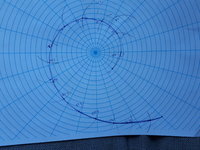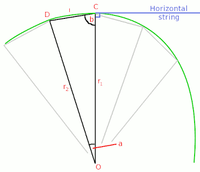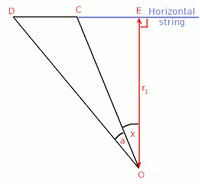Sluggonomics
New member
- Joined
- May 30, 2020
- Messages
- 5
Hi,
I am trying to derive a polar equation which defines the curvature of a spiral whose radius grows proportionally with its arc length.
Ex: for any given 1cm arc length, the radius grows at a factor of 1.1
I am having a tough time accomplishing this and I am very eager to see the solution.
I would like to define radius as a function of theta, related using these variables:
k : growth factor (ex: 1.1 cm^-1) k>1
a : initial radius
Theta : angle from initial radius
Seemed so simple but not so much...
Thank you!
I am trying to derive a polar equation which defines the curvature of a spiral whose radius grows proportionally with its arc length.
Ex: for any given 1cm arc length, the radius grows at a factor of 1.1
I am having a tough time accomplishing this and I am very eager to see the solution.
I would like to define radius as a function of theta, related using these variables:
k : growth factor (ex: 1.1 cm^-1) k>1
a : initial radius
Theta : angle from initial radius
Seemed so simple but not so much...
Thank you!




